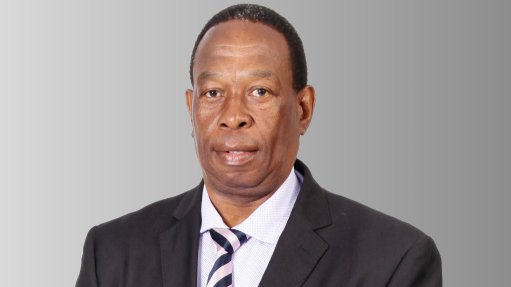Eskom acknowledges difficult trade-offs ahead as it pursues energy transition

Eskom acknowledges difficult trade-offs ahead as it pursues energy transition
State-owned utility Eskom is expecting to have to make “difficult trade-offs” in its pursuit of a just energy transition (JET) strategy, as it grapples with ongoing short-term operational struggles and budgetary shortfalls.
Speaking at a South African National Energy Association webinar on December 7, which covered the South African perspective on emerging market trade-offs on the pathway to net zero, Eskom corporate strategy and planning senior manager Lizette Mabone said that, although Eskom was prioritising several generation, transmission and distribution interventions in the short to medium term to further the JET of its fleet, it needed to remain cognisant of its first priority of ensuring energy stability.
“As a developing country, we will need to have some difficult trade-offs that need to be made to ensure security and affordability in the short term. It's all about balance. It's not either or, but rather what makes sense for the country,” she said.
In terms of transitioning its generation arm, Mabone said Eskom would continue with its repurposing and repowering interventions to mitigate the socioeconomic impact of the transition. It would also engage in projects to enable grid flexibility and provide essential services to the future market.
In addition, Eskom aims to leverage its existing asset base and explore partnerships to increase its share in renewable energy.
In transmission, Eskom aims to expand and strengthen its network with an accumulative 14 000 km of lines and more than 170 transformers. Prioritising transformer capacity increases to enable faster grid capacity is seen as a priority, alongside implementing grid technologies to enable higher renewable energy penetration into the grid.
In terms of distribution, Eskom said that it would be investing in smart technology to enable distributed energy sources, as well as scaling up microgrid solutions. It would strengthen the distribution network with about 8 000 km of lines and about 1 000 substations to be added in the coming years.
Importantly, it would drive distributed energy investment in microgrids and battery energy storage solutions (BESS).
“We do intend to diversify our energy generation fleet between now and 2035. We want the transition to be just, to be balanced and to not be rushed, because there are other factors economically, socially, economically, and technically that need to be taken into consideration,” Mabone said.
She added that, while there was significant development in clean energy solutions, it would be some time before low-carbon options were available at scale. She pointed out that technology development took time, with hydropower, coal, nuclear, wind and solar technologies taking about 40 years to move from concept to commercialisation.
She argued that adopting emerging technologies before reaching full scale could lead to reliability challenges. Eskom would pursue technologies that have been commercially and technically proven viable, including wind, gas, solar, hydro-pumped storage and BESS.
“It’s really about trying to find that sweet spot to try and accommodate the needs of South Africa and what is actually possible for Eskom, considering the context that we find ourselves in. We have options that we've looked into but we've also had to be realistic about what is possible, looking at tech development and the time that it takes from concept to full-scale development,” Mabone reasoned.
She said Eskom's strategy was to turn the company around while preparing for the inevitable JET. This required some overlap in the short and medium term with turnaround objectives, being related to operational recovery, improvement of income, strengthening of the balance sheet, and the separation of the business into its generation, transmission and distribution entities.
Importantly, the turnaround objectives for Eskom include improving its overall performance and ethical culture.
This turnaround would have to overlap with the JET objectives of optimising the repurposing and repowering plans and the implementation of an integrated socioeconomic strategy, while actively pursuing renewable energy generation and allocation.
She said the guiding principle in the long term would be to deliver on the turnaround to address immediate operational and financial challenges while putting the company on a sustainable path by aligning Eskom's decisions with the evolution of the industry and the JET.
She emphasised that pursuing both the JET and turnaround strategies could not be viewed as binary, but that both aspects were important and needed to be carried out in concert with one another, as there remained an urgent focus on the turnaround to respond to the current energy crisis.
Mabone laid out the risks that exist for Eskom and the country at large if it did not pursue an energy transition.
She noted that in terms of South Africa’s trade partners, about 33% of trade would be at risk owing to carbon tariffs by 2030 with up to 56% of trade being put at risk by 2050 if South Africa did not reduce its fossil fuel energy dependence.
Mabone added that customers, such as large industrial customers and mining customers, were already decarbonising and were looking for renewable energy power.
In addition, some coal plant original-equipment manufacturers have indicated that they would not be willing to renew select spares contracts, leading to problems with coal supply in the future.
In addition, funders were becoming increasingly limited and expensive, with reduced insurance for coal-based power plants available.
By contrast, Mabone said the benefit of embracing the JET would be that South African exports would remain competitive in spite of growing carbon tariffs, and that cheaper renewable energy could be sold to large customers looking to decarbonise.
She added that renewable energy technology was becoming increasingly practical, and that costs continued to drop, thereby making it more attractive from a business perspective.
In addition, she noted that abundant funding for renewable energy technologies was available, often at concessional rates, making it a viable business case.
She noted that Eskom was the most significant contributor of greenhouse-gas emissions in South Africa, accounting for about 47% of the country's total emissions. In addition, it remains the world's largest emitter of sulphur dioxide.
Mabone said that by transitioning Eskom away from fossil fuels, South Africa would improve its environmental performance. She also emphasised that South Africa would not be able to meet its emissions reduction targets without Eskom's direct involvement.
Mabone noted that South Africa was battling with an energy trilemma: energy security, energy affordability, and energy sustainability. The unreliable performance of Eskom's installed base had regularly led to between 4 000 MW to 6 000 MW shortfalls in available capacity to meet demand, leading to ongoing loadshedding.
However, despite this, energy costs continue to rise, with South Africa's socioeconomic status and high levels of unemployment and inequality only exacerbating the problem.
Gross domestic product (GDP) growth has been negatively impacted by the energy crisis, as reflected in Statistics South Africa's recent GDP statistics for the third quarter, which showed that the economy has yet again shrunk by 0.2% from the second quarter.
Mabone said that pursuing energy sustainability was a priority despite these challenges, and that it would indeed be a long-term salve to many of South Africa’s economic woes, with about 80% of electricity generation still being fossil fuel-based currently, and much of the world putting pressure on South Africa to change its energy generation profile.
She said that, as a developing country, there would necessarily be difficult trade-offs that needed to be made to ensure security and affordability in the short term. However, decision-making in this dynamic context needed to enable sufficient flexibility to respond to the changing context.
Article Enquiry
Email Article
Save Article
Feedback
To advertise email advertising@creamermedia.co.za or click here
Comments
Press Office
Announcements
What's On
Subscribe to improve your user experience...
Option 1 (equivalent of R125 a month):
Receive a weekly copy of Creamer Media's Engineering News & Mining Weekly magazine
(print copy for those in South Africa and e-magazine for those outside of South Africa)
Receive daily email newsletters
Access to full search results
Access archive of magazine back copies
Access to Projects in Progress
Access to ONE Research Report of your choice in PDF format
Option 2 (equivalent of R375 a month):
All benefits from Option 1
PLUS
Access to Creamer Media's Research Channel Africa for ALL Research Reports, in PDF format, on various industrial and mining sectors
including Electricity; Water; Energy Transition; Hydrogen; Roads, Rail and Ports; Coal; Gold; Platinum; Battery Metals; etc.
Already a subscriber?
Forgotten your password?
Receive weekly copy of Creamer Media's Engineering News & Mining Weekly magazine (print copy for those in South Africa and e-magazine for those outside of South Africa)
➕
Recieve daily email newsletters
➕
Access to full search results
➕
Access archive of magazine back copies
➕
Access to Projects in Progress
➕
Access to ONE Research Report of your choice in PDF format
RESEARCH CHANNEL AFRICA
R4500 (equivalent of R375 a month)
SUBSCRIBEAll benefits from Option 1
➕
Access to Creamer Media's Research Channel Africa for ALL Research Reports on various industrial and mining sectors, in PDF format, including on:
Electricity
➕
Water
➕
Energy Transition
➕
Hydrogen
➕
Roads, Rail and Ports
➕
Coal
➕
Gold
➕
Platinum
➕
Battery Metals
➕
etc.
Receive all benefits from Option 1 or Option 2 delivered to numerous people at your company
➕
Multiple User names and Passwords for simultaneous log-ins
➕
Intranet integration access to all in your organisation

















